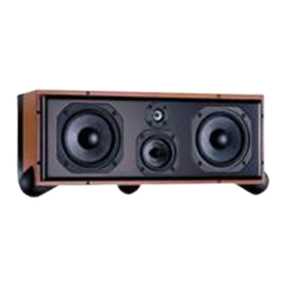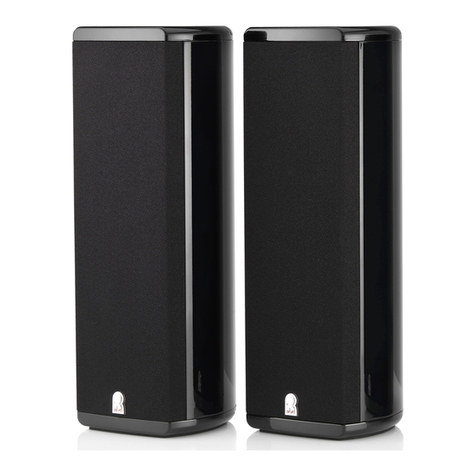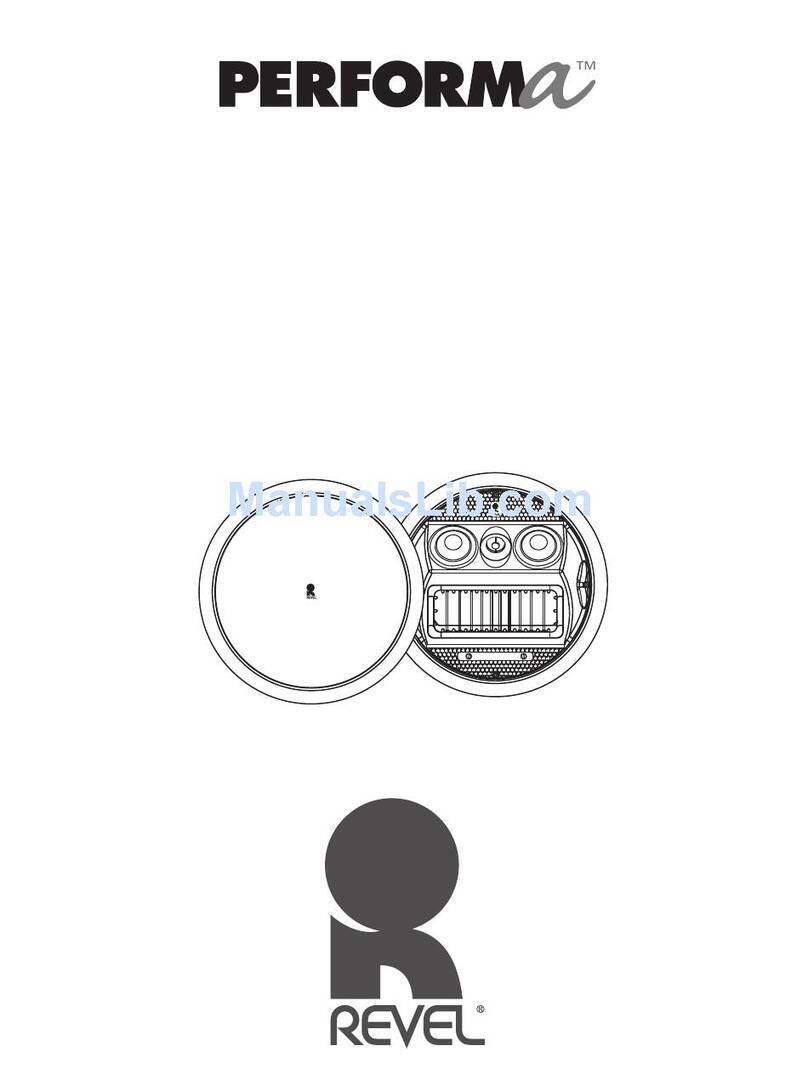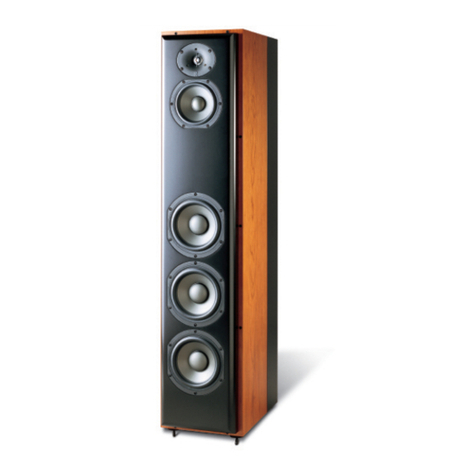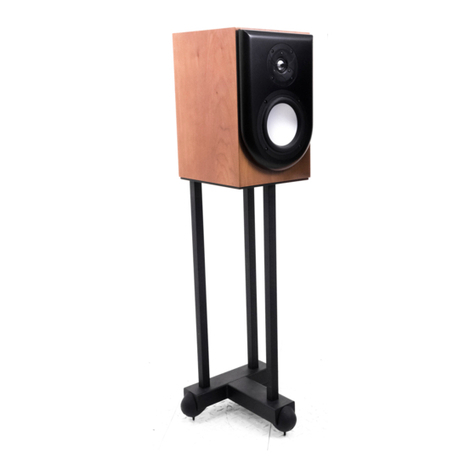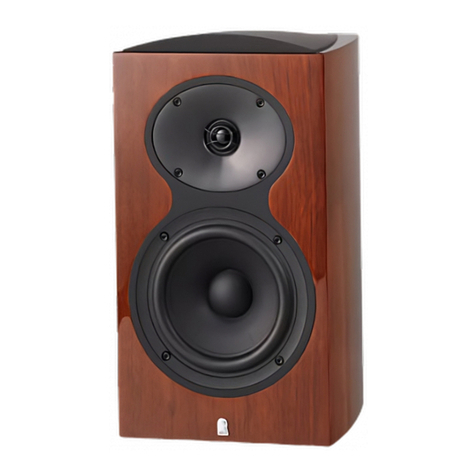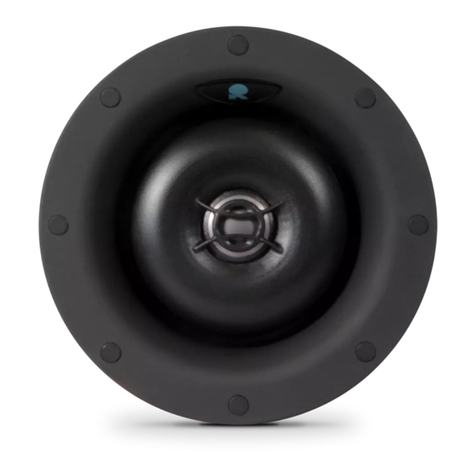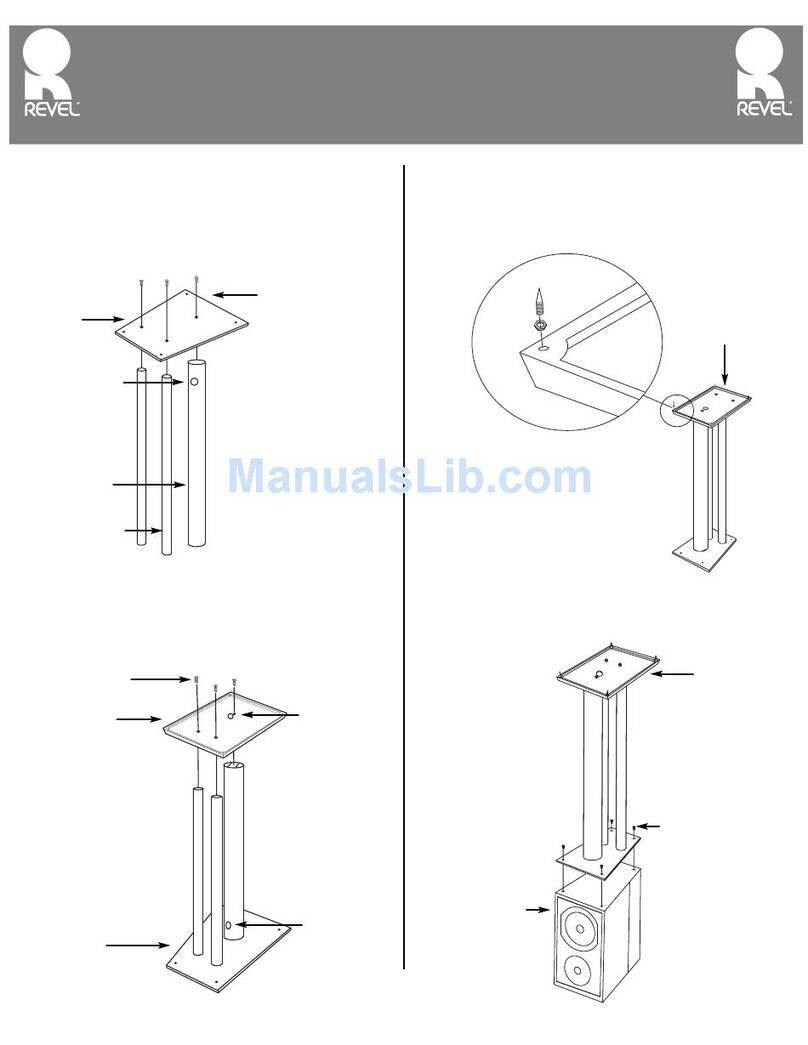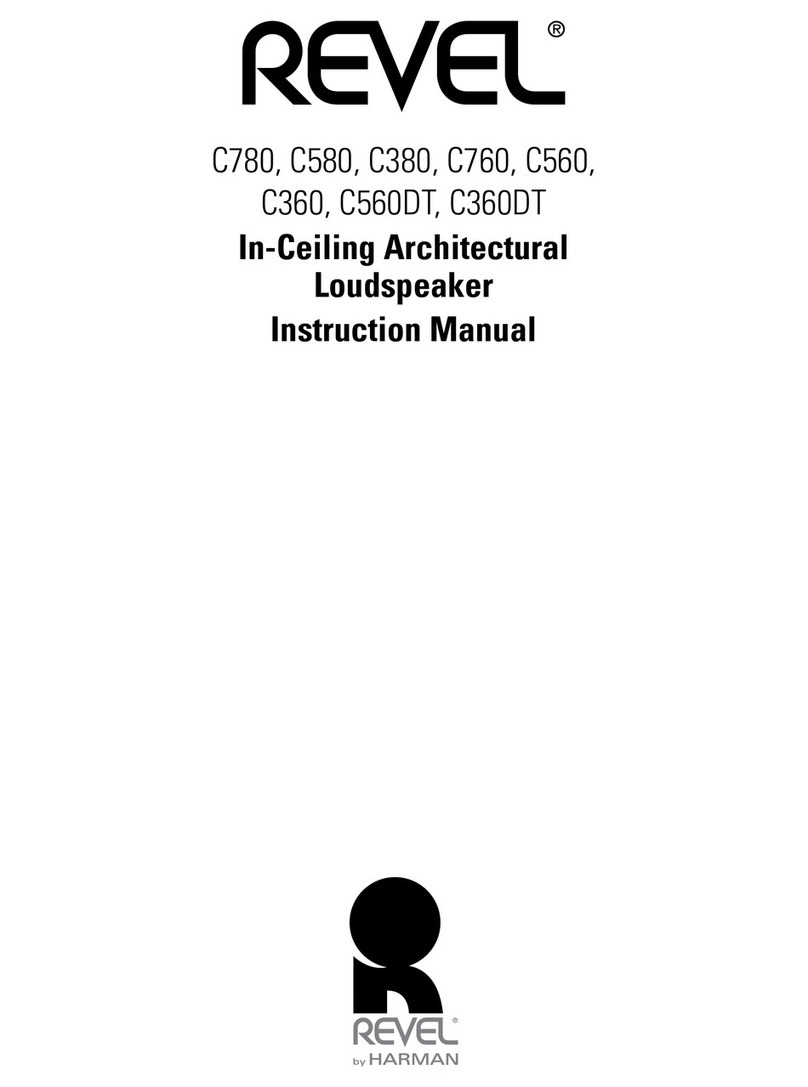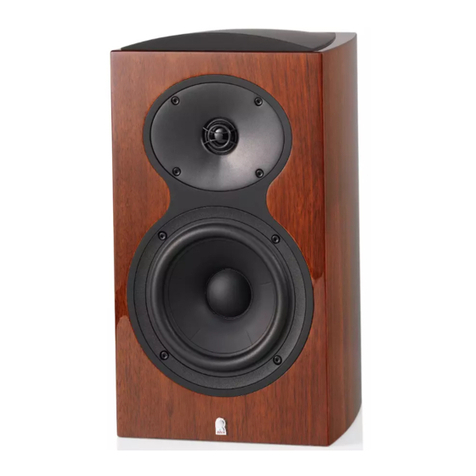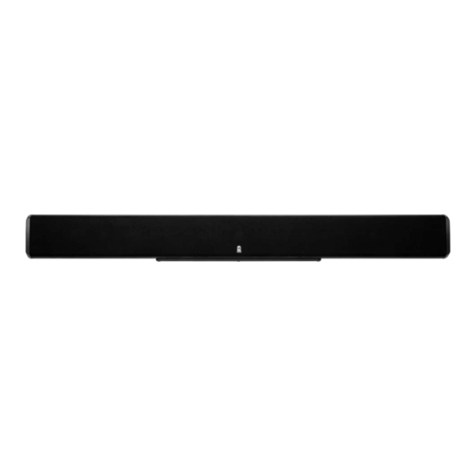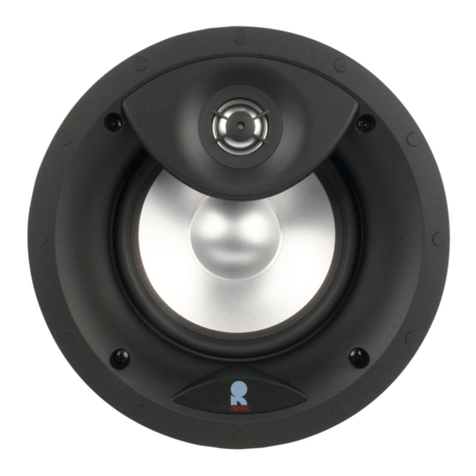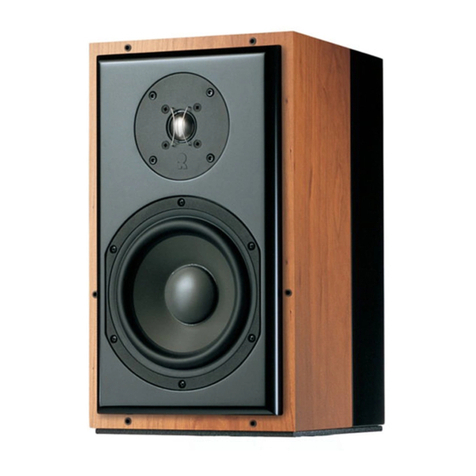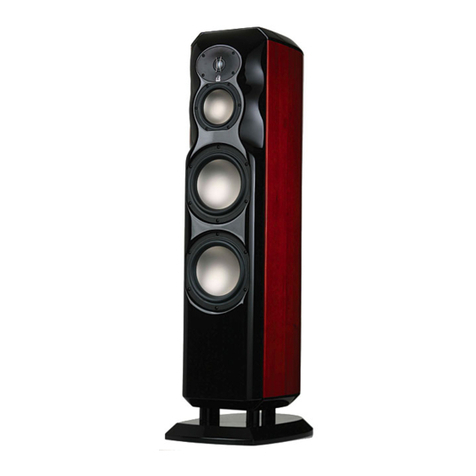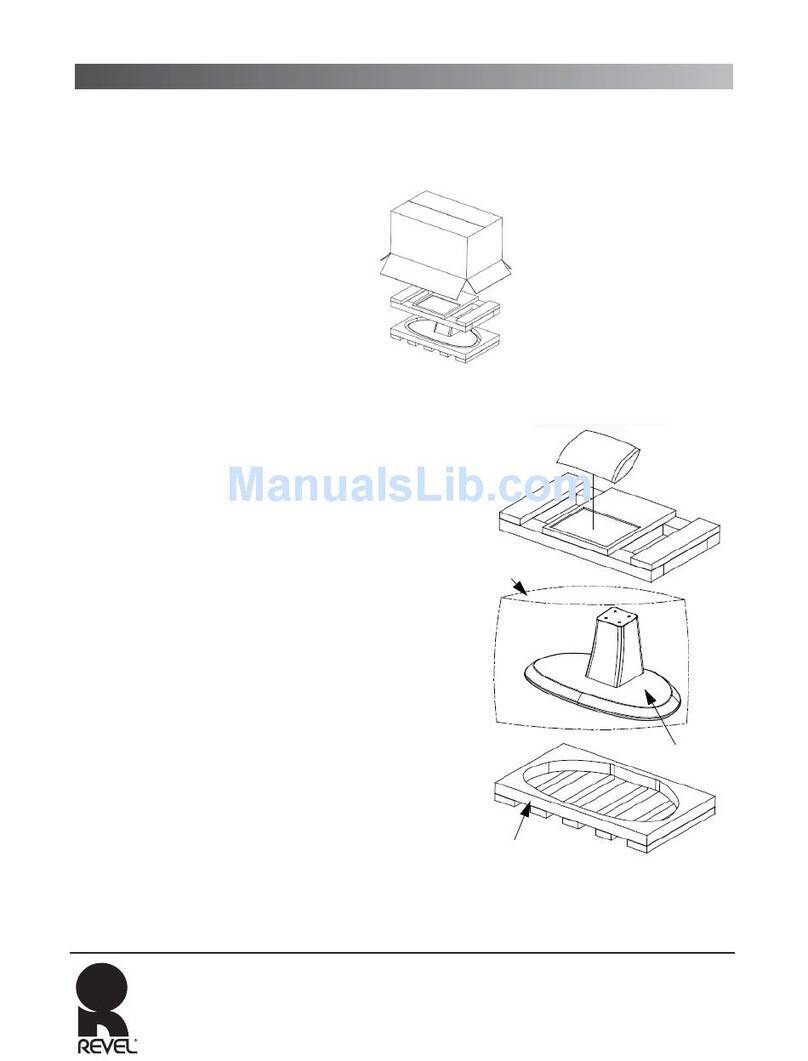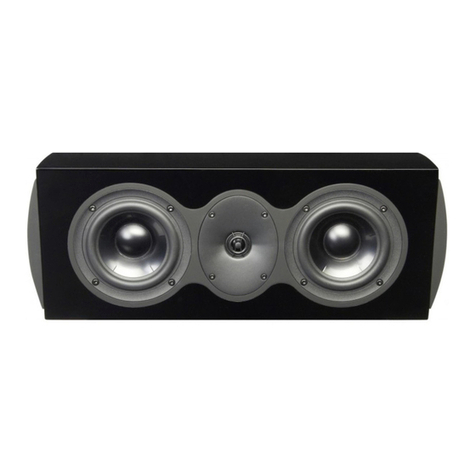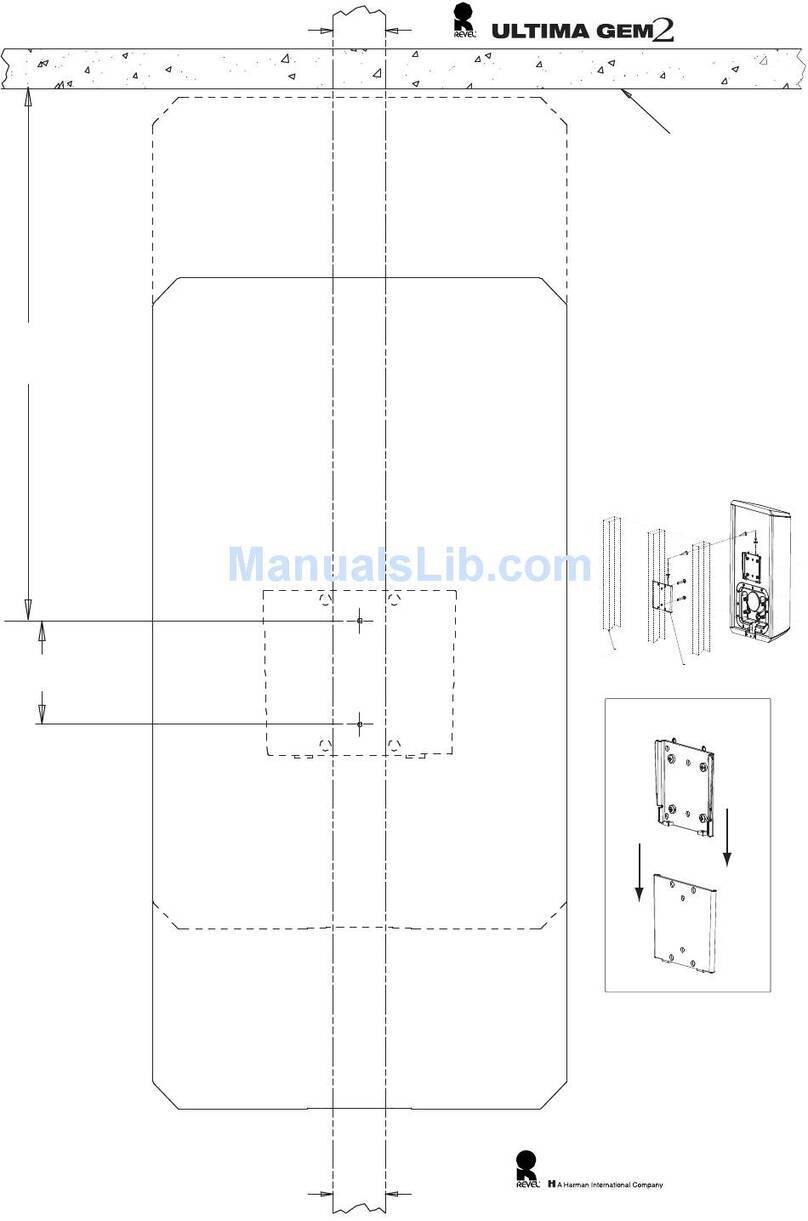
6Revel PerformaBe F228Be M126Be Loudspeaker
Owner’s Manual
M126Be HEIGHT PLACEMENT
• For best results, place the M126Be speaker so the tweeter is aligned within
a few inches of seated listener height.
• Optional Performa-series M Stand pedestal stands are available for the
M126Be that places the speakers at the proper height for seated listeners.
Refer to the assembly instructions that are included with the stands for
additional information.
CAUTION: When placed on the optional pedestal stands, loudspeakers
such as the M126Be have a high center of gravity, which may cause
them to fall if tipped or improperly positioned. To avoid this, anchor
the stand to the floor and/or wall using the same procedures and
hardware used to anchor bookcases, wall units, and other furniture.
HARMAN International Industries, Inc. assumes no responsibility
for proper selection and installation of hardware or for any personal
injuries or product damages resulting from improper installation or a
fallen loudspeaker.
ADJUSTABLE SPIKES (F228Be ONLY)
Four adjustable spikes are included for each F228Be loudspeaker. You can
install these spikes in the bottom of the loudspeaker cabinets to provide optimal
stability, accommodating installations on tile, hardwood, or carpeted floors.
To install and adjust the spikes:
1. Place the loudspeaker on its side on a soft towel or carpeted floor.
2. Screw the spikes into the fittings on the bottom of the loudspeaker. The
spikes can be installed with either the pointed end or round end protruding
from the cabinet.
Pointed
End Out or Rounded
End Out
Clamping Ring
(included)
Washer
(included)
NOTE: When moving the F228Be with the spikes installed, avoid dragging
the loudspeaker across the floor.
If the loudspeakers are to be placed on a carpeted floor, install the spikes with the
pointed ends protruding from the cabinet.
• If the loudspeakers are to be placed on a wood, linoleum or tile floor,
install the spikes with the round ends protruding from the cabinet. After
determining the final locations for the speakers, you can place coins or use-
specific discs under the spikes to protect the floor surface from damage.
NOTE: If you prefer to install the spikes with the pointed ends protruding
from the cabinet, you must place coins or similar items under the spikes to
avoid damaging the floor surface.
3. Rotate the locking ring clockwise to firmly secure the spike to the cabinet.
Make sure to thread the locking rings of all four spikes to achieve a level
balance when the loudspeaker is placed right side up on the floor.
CAUTION: Floor-standing loudspeakers such as the F228Be have a high
center of gravity, which may cause them to fall if tipped or improperly
positioned. To avoid this, anchor the loudspeaker to the floor and/
or wall using the same procedures and hardware used to anchor
bookcases, wall units, and other furniture. HARMAN International
Industries, Inc. assumes no responsibility for proper selection and
installation of hardware or for any personal injuries or product
damages resulting from improper installation or a fallen loudspeaker.
LISTENING ROOM ACOUSTICS
Listening rooms have a profound impact on sound, particularly at lower
frequencies. In fact, the effect of the listening room can dominate sounds below
around 400Hz. Ideally; listening rooms would include optimized dimensional
ratios to minimize the effects of room resonances. But in reality, most listening
rooms are not designed to enhance loudspeaker performance.
The interaction between loudspeakers and listening rooms is complex, with two
important determinants that affect the loudspeaker and the listener:
• Surfaces and other boundaries often cause large peaks and dips in low-
frequency response.
• All rooms suffer, at least to some degree, from standing waves (also known
as room modes or resonances) that create large low-frequency response
errors. Bass loudness can vary plus or minus 12dB or more in different areas
of the room.
Unfortunately, there is no simple solution that addresses both of these factors.
Even computer software programs that examine one or both factors may not
calculate proper primary listening position or loudspeaker placement values.
In most cases, proper selection of the primary listening position combined with
proper placement of the loudspeaker can result in superior performance at
lower frequencies. The difference between superior and inferior results is often
just a small adjustment of the
ACOUSTIC TREATMENT MATERIALS
The Revel PerformaBe models feature high-order filters that optimize the
loudspeakers’ on-axis and off-axis response, minimizing sonic degradations
that occur in overly “live” rooms (those with surfaces that are acoustically
reflective). Many listeners choose to place acoustic treatment materials at the
room’s primary reflection points to reduce these reflections. The most important
locations are the first reflection points on the front and side walls. Either
broadband acoustic absorbers or diffusers may be placed at the first reflection
points on the rear wall.
NOTE: There are numerous options for absorbent material. None are
superior to low-cost fiberglass. It is important to use absorbers that are
at least four inches thick, to avoid altering the spectral response of the
loudspeakers. If sculpted foam is used, it must be at least eight inches thick,
as such absorbers are less efficient than non-sculpted foam.

